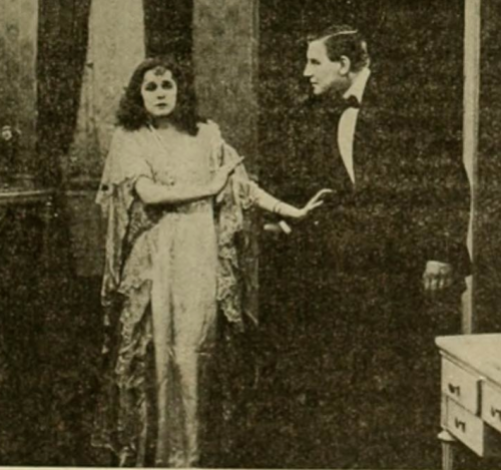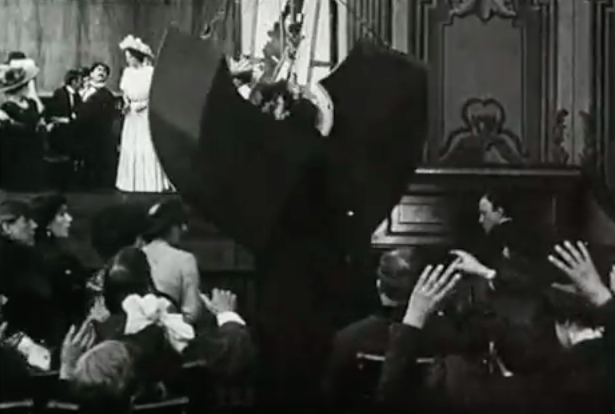One hundred years ago this week, Grace Kingsley put a Hollywood spin on the upcoming war tax.
Of course, to be within the charmed circle of picture stars and picture magnates who receive salaries which soar up into the rarified atmosphere occupied by high art and the income tax is an enviable position. Nevertheless now that these poor struggling picture folk are to have their salaries submitted to further pickings on account of the war – in other words, now they are liable to have to yield up to 40 per cent of their incomes as war tax—fancy how they will suffer. They will not be able to afford more than three or four cars and chauffeurs apiece, they will have to be satisfied with old second-hand diamonds, they will be able to buy only a few hundred dollars worth of government bonds at a time, and will have to cut over last year’s ermine and make it do for another winter…However, these patriots are keeping a noble silence on the subject, so we presume they are willing to sacrifice in the cause of patriotism.
She listed some of the people who made over $100,000 who would be affected, including D.W. Griffith, Thomas Ince, Charlie Chaplin, Mary Pickford, Douglas Fairbanks, Francis X. Bushman, Roscoe Arbuckle, Mack Sennett, William S. Hart and Clara Kimball Young.
Many changes were made to the War Revenue Act of 1917 before it passed in October, and it wasn’t just wealthy people affected. In 1916, people making less than $20,000 didn’t have to bother with income tax at all; this act lowered the threshold to $2,000. However, the average annual household income was about $800 so many people still didn’t have to file. The tax was graduated starting at 4 percent, rising to 31 percent for incomes of $100,000 and 67 percent for $2,000,000 or more.
Personal income tax wasn’t the only way the country paid for the war, they also raised corporate taxes, added more tax to luxury items like cars and sold bonds. Even with these measures, they didn’t cover the whole cost of it and the national debt rose from one billion in 1915 to twenty billion in 1920.
Kinglsey’s favorite film this week was The Clock, and as usual there was only one charming actor she could compare the lead to:
Franklyn Farnum comes near stripping bare the brow of Douglas Fairbanks in this buoyantly cheerful little tale. Mr. Farnum plays the role of a happy-go-lucky young scamp with an irresistible smile and a breezy manner, by which he gets away with quite incredible but always cheerful impertinences. The story has to do, along in the third reel, with a clock left the hero by a mysterious uncle along with an inheritance of five thousand a year on the end of a codicil string, which requires the young man to go to bed at 10 and arise at six. Probably there is a moral about it somewhere, but its entirely painless.
Unfortunately it’s a lost film. Farnum was a former vaudevillian who was nearly 40 when he appeared in The Clock. He went on to a very long career primarily in Westerns with 618 credits on the IMDB.
Kinglsey’s best line of the week was in her review of The More Excellent Way: “The story is one of those which smuggles smut to the hypercritical and snuffling sisterhood.” Anita Stewart played a “spineless female” who marries a man she doesn’t love and “who maunders through five reels between divorce and broken-hearted silence.” Eventually she realizes she loves him. It’s also a lost film.
Kinglsey typed some nonsense this week, but she couldn’t keep sarcasm out of it. Under the headline “Rapid Evolution Note” she said that the “Hawaiian” actress, Miss Lehua Waipahu, of The Bottle Imp had changed her name to Margaret Loomis, and had managed to learn to speak English quite fluently. She wrote, “as a tribute to our climate, be it known her complexion has suddenly turned very fair.” Waipahu/Loomis wasn’t the least bit Hawaiian; she was born in San Francisco in 1893 to Charles (from California) and Georgia (from Iowa) Loomis, and grew up in Los Angeles. She studied dance at the Denishawn School and toured with Ruth St. Denis before she became an actress. I don’t know who suggested she be temporarily Hawaiian for the film, but by a 1920 Picture-Play Magazine interview she dropped all of the Lehua Waipahu silliness and just described The Bottle Imp as one of her “good roles.” She worked for Paramount Studios until the mid-1920s when she married and retired.
Kinglsey reported that F.H. Richardson, “one of the greatest experts on motion picture projection in America” had arrived in Los Angeles as part of his North American tour to preach “the gospel of perfect projection to the house managers.” He got a reception at Universal City, gave a lecture at the Superba Theater, and was given a banquet at a downtown café. It’s a shame we don’t have perfect projection preachers being feted by film companies now. Secondly, I’m still amazed by what’s available online: the Screening Room Services site has a biography and collection of his lectures here.






























